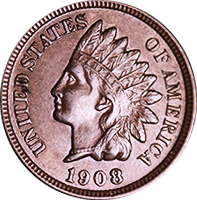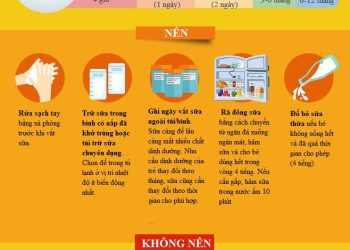The 1908 Indian Head Penny value ranges from $6.60 to $35,000 depending on condition, mint mark, and errors. Philadelphia-minted coins (no mint mark) start at $6.60 in fine condition, reaching $1,000+ in higher grades. The 1908-S (San Francisco) is a key date with low mintage of 1.1 million, valued from $9.95 to $135.41 circulated, while MS64 grades fetch $1,035 and MS66 can reach $4,701.95. Top-grade MS67RD examples sold for $35,000. Valuable errors include ragged clip ($195), repunched date RPD Snow-5 ($399.98), and misplaced “S” mint mark ($185). Coin value depends on grade, rarity, mint mark, and error varieties.
The 1908 Indian Head Penny represents one of the final years of this beloved American coin series, and certain varieties from this year can fetch impressive prices at auction. Whether you’ve inherited a collection or discovered one in an old jar, understanding the difference between a common Philadelphia strike and a rare San Francisco specimen could mean the difference between pocket change and a substantial payday.
Understanding the Two Main 1908 Varieties
The United States Mint produced Indian Head Pennies at two facilities in 1908, creating distinct varieties that collectors value differently today. The Philadelphia Mint struck coins without any mint mark, while the San Francisco Mint produced a limited quantity marked with a small “S” below the wreath on the reverse side.
The Philadelphia version saw a production run of approximately 32.3 million coins, making it relatively common in circulated grades. You can identify these coins by checking the reverse—if there’s no letter below the wreath, you have a Philadelphia strike. In fine condition, these typically sell for around $6.60, though pristine examples in extremely fine to about uncirculated condition can command up to $1,000 from serious collectors.
The 1908-S variety tells a different story entirely. With only 1.1 million pieces minted, this San Francisco product qualifies as a semi-key date that experienced collectors actively pursue. Circulated examples start around $9.95 but quickly escalate to $135.41 in very fine condition. The real excitement begins with uncirculated specimens: an MS64 graded coin reaches $1,035, while an MS66 jumps to $4,701.95. The crown jewel remains a PCGS MS67RD example that carried a $35,000 price tag.
One characteristic quirk of the 1908-S involves weakly struck feather tips on the headdress. This manufacturing inconsistency occurred frequently at the San Francisco facility that year, so don’t automatically assume your coin is damaged if the feather details appear soft.
Valuable Minting Errors That Increase Worth
Manufacturing mistakes that would have been considered defects in 1908 now represent premium collectibles that error coin specialists eagerly seek. Several specific varieties command attention in today’s market.
The ragged clip error occurs when the coin blank wasn’t properly positioned during punching, creating an irregular edge where metal is missing. A 1908 Indian Head Cent displaying this error and graded NGC MS62 BN sold for $195, demonstrating how even mid-grade error coins outperform standard strikes.
Repunched date varieties happened when the date digits were stamped multiple times in slightly different positions. The Snow-5 variety represents one cataloged example where this doubling is visible under magnification. An ICG MS65RB specimen with this repunched date error reached $399.98 at auction, nearly matching the value of much higher-grade normal strikes.
The 1908-S also produced fascinating mint mark errors. Some coins show a misplaced or weak “S” stamp, occasionally combined with struck-through grease errors that created additional surface anomalies. One example combining these characteristics sold for $185, proving that even circulated error coins carry premiums.
Additional errors to watch for include double strikes where the coin received two impressions from the dies, doubled die obverse varieties showing doubling in design elements, rotated die errors where obverse and reverse don’t align properly, and strike-through grease errors creating raised lines or blobs on the surface.
How Grading Determines Your Coin’s Market Value
Professional coin grading follows a seventy-point scale from Poor-1 through Mint State-70, with each increment representing noticeable differences in preservation quality. For Indian Head Pennies, the journey from Good to Mint State dramatically affects pricing.
Good grade coins show heavy wear with the design barely visible but all major elements identifiable. Fine grade specimens display moderate wear with clear design details but flattened high points. Very Fine coins retain most design features with only slight wear on the highest elements. Extremely Fine examples show minimal wear limited to the very highest points, while About Uncirculated coins display just a trace of friction on the design peaks.
Mint State coins never entered circulation and show no wear from handling, though they may have contact marks from storage and transportation. Within Mint State, numbers from MS60 to MS70 further refine condition assessment, with MS65 and above considered premium quality that commands exponential price increases.
Indian Head Cents receive an additional color designation that significantly impacts value. Red (RD) coins retain original mint luster and copper color, commanding the highest prices. Red-Brown (RB) specimens show partial toning, while Brown (BN) coins have completely toned to darker colors. Full red examples in high grades represent the ultimate prize for collectors, often selling for multiples of their brown counterparts in identical numeric grades.
Maximizing Value When Selling Your 1908 Penny
Before selling any potentially valuable coin, proper identification and authentication protect you from underselling a treasure. First, examine the reverse below the wreath using a magnifying glass to determine if you have a Philadelphia or San Francisco strike—this single letter makes an enormous difference in value.
Next, assess the overall condition honestly by comparing your coin to graded examples in reference guides or online auction archives. Look for errors using magnification, paying special attention to date digits, mint mark placement, and edge irregularities. Document your findings with clear photographs taken in natural light.
For coins that appear to grade extremely fine or better, or any 1908-S regardless of condition, professional grading from PCGS or NGC provides authentication and encapsulation that maximizes marketability. The grading fee typically ranges from $20 to $50 depending on service level, an investment that pays dividends when selling coins worth several hundred dollars or more.
Consider multiple selling venues based on your coin’s characteristics. Common circulated Philadelphia strikes sell efficiently through local coin shops or online marketplaces. Semi-key dates like the 1908-S in nice condition deserve consignment to specialized auctions where competitive bidding realizes full market value. Error varieties benefit from dealers who specialize in mint errors and actively seek inventory.









What year is the most valuable Indian Head Penny?
The most valuable Indian Head penny is often considered the 1909-S, with a mintage of only 309,000, though the 1877 is also extremely rare and highly sought after due to its very low mintage and popularity among collectors. Other key dates that drive value include the 1908-S and various early issues from the 1860s, with value depending on the coin’s specific year, mintmark, and condition.
What is the mintage of the 1908 S Indian Head Penny?
It was also the first time that the S-mintmark would appear on the humble cent. With just 1,115,000 struck, the 1908-S had the third lowest mintage of the series after nearly a half century of production.
How do I know if my Indian Head Penny is worth anything?
To determine if your Indian Head penny is valuable, identify the date, check for a mint mark (S for San Francisco), look for key dates like 1877 or 1909-S, and assess its condition, noting the visibility of the “Liberty” on the headdress. Also, examine the coin for mint errors such as rotated dies, double strikes, or broadstrikes, as these can significantly increase value. Consider getting the coin authenticated by a reputable dealer or grading service, especially for key dates, as counterfei…